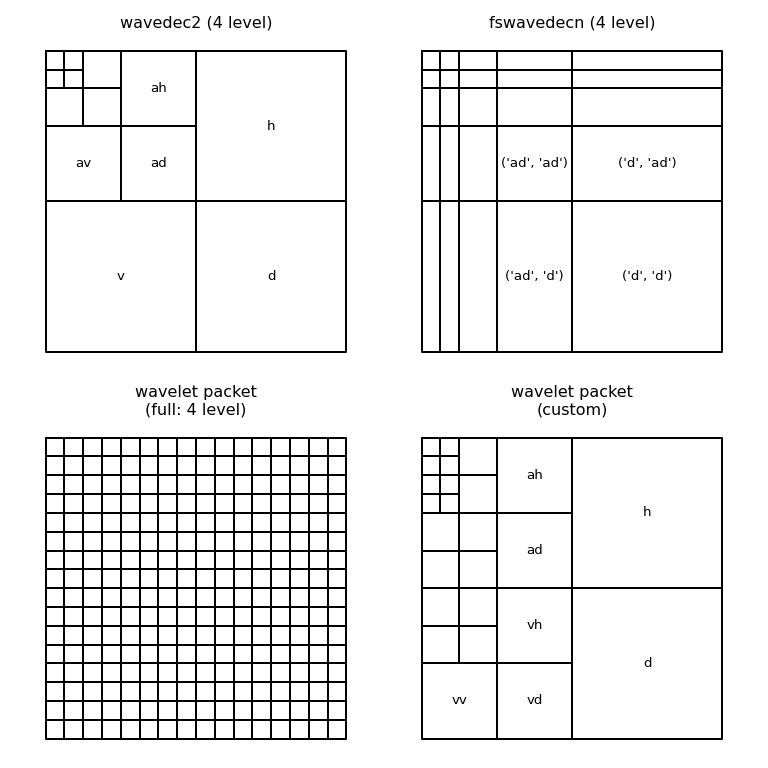Dear @Wongboo , the code computes a single transformation per Tensor. However, to apply different transforms to different signals of a batched tensor, you can split along the batch dimension. For example
import torch
import ptwt
trnd = torch.rand((10, 20, 20))
t1, t2 = torch.split(trnd, 5)
result_wavedec2 = ptwt.wavedec2(t1, "haar")
result_fswavedec2 = ptwt.fswavedec2(t2, "haar")
I still don't understand how to custom level adapted to signal? Like the lower right part of . Can adaption of signal in batches be different?
. Can adaption of signal in batches be different?